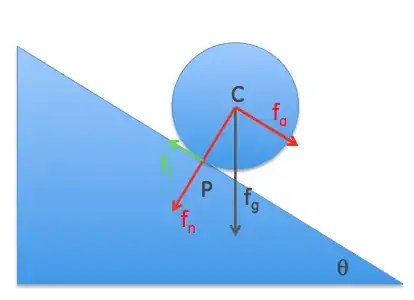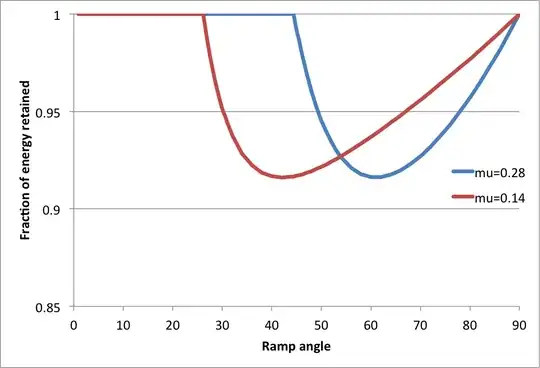We all are familiar with the classic ball rolling down the incline exercise in rotational dynamics. Here is quite a tricky conceptual problem:
You have an incline of fixed height, but the angle of inclination may vary. Consider the total kinetic energy $K$ of the ball at the bottom of the incline. Describe the graph of $K$ vs. the angle of inclination $\theta$. We can assume for simplicity that the static and kinetic friction coefficient are the same.
Here are some conceptual observations. Now, for $\theta < \theta_s$ where $\theta_s$ is the minimum angle at which the ball slips, friction does not do any work on the ball (rolling friction), so $K=mgh$ (the graph is a straight line) But for $\theta > \theta_s$, the ball both slips and rolls, so some of the kinetic energy is lost to slipping. Thus we should the graph to decrease. As $\theta$ increases, the friction force decreases (it is proportional to $\cos(\theta)$, so we should expect the graph to increase after some point. For $\theta=90$, we are back to $K=mgh$. I also suspect that we have some quadratic-like behavior for $\theta_s<\theta<90$, but I don't know exactly how to quantify the behavior of the ball in this region as it is both slipping and rolling, which makes things somewhat complicated.
One might naively say that the energy lost due to slipping is $fd$ where $f$ is the friction force and $d$ is the distance along the incline which the ball travels. However I believe this is not the case, as the effective distance over which friction acts, call it $d_{eff}$ is less than $d$, and depends on the relationship between the angular velocity and the translational velocity of the ball.
Note really that this problem can be solved if one has a clear understanding of the mechanics for rolling and slipping scanrios, so it may be helpful to say a few things about this.

